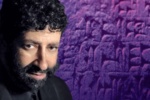The Holy Spirit jolted the American church more than four decades ago and brought waves of renewal. Today we celebrate those days of visitation.
ON PASSION SUNDAY, APRIL 3, 1960, Episcopal priest Dennis Bennett set the scene for what appeared to be his own crucifixion. He announced to his congregation-St. Mark’s in Van Nuys, California-that he had received the baptism in the Holy Spirit and had spoken in tongues. This confession, at a time when the baptism in the Spirit was a little-known phenomenon in mainline churches, angered church leaders, one of whom asked him after the second service to resign.
The event is now considered to be the official beginning of
the charismatic movement in the United States.
According to historian and theologian Peter D. Hocken, had
publicity about Bennett’s experience remained local, it might not
have had such an impact. But a Pentecostal woman in his parish,
Jean Stone, made certain it was noised abroad. She notified Time
and Newsweek of the incident, and the stories that subsequently ran
in those magazines were instrumental in spreading the impression
that a new move of God was under way.
Since the days of the 1906 Azusa Street Revival (which, coincidentally, also erupted in Southern California), seekers in this country had been receiving the baptism in the Holy Spirit with the evidence of speaking in tongues in increasing measure. But for decades this experience was generally restricted to Pentecostal
groups who remained outside mainline denominations. What set Bennett’s experience apart was that it occurred to a leader who was part of a traditional church.
As Hocken points out, Bennett’s influence did not end with the magazine publicity. After his resignation from St. Mark’s, he was offered a post as vicar of St. Luke’s in Seattle, a dying mission church that was about to be closed. Within a year after Bennett accepted the position, attendance at the church quadrupled. It became a fountainhead of renewal as new and existing members were baptized in the Holy Spirit and visitors from all over the country came seeking this blessing. And Bennett himself traveled to spread the news in response to speaking invitations from many different Christian groups.
Bennett’s efforts, along with publications that sprang up to promote the renewal, advanced the movement to such an extent that by the early 1960s, Hocken says, “people in virtually every major Protestant tradition [Baptists, Lutherans, Mennonites, Methodists, Presbyterians] were receiving the baptism in the Holy Spirit.”
Clearly, the charismatic movement has grown and changed in the 45 years since Bennett admitted to a shocked congregation that he had spoken in tongues. The movement has gone through several phases, some of which overlap, says Pentecostal historian Vinson Synan, professor of divinity and dean at Regent University.
The first phase, which occurred during the 1960s and early 1970s, was the “excitement” stage, Synan says. People were enthralled with the new move and were actively engaged in spreading it through prayer meetings, conferences and parachurch organizations such as the Full Gospel Business Men’s Fellowship International (FGBMFI), founded by Demos Shakarian in 1951, and Aglow Fellowship International, a nondenominational group for Christian women that began in Seattle in 1967. Both these organizations relied heavily, at meetings and in their publications, on the testimonies of participants who had been radically touched by God to bring others into the fullness of the Spirit.
It was during this phase-in 1967-that the Catholic Charismatic Renewal, one of the largest movements in neo-Pentecostal history, got its start. A group of professors at Duquesne University in Pittsburgh sparked a fire among their students after they
themselves were baptized in the Holy Spirit, and the fire quickly spread to Notre Dame in South Bend, Indiana, and to the University of Michigan. From there it spread around the world. Since its inception, Synan writes in The Century of the Holy Spirit, the Catholic movement “not only has gained the approval of the church but also has touched the lives of over 100 million Catholics in 120 countries.”
Another significant movement that arose during this phase was the Jesus People movement, comprised primarily of young hippies who were converted to Pentecostal beliefs. Because of their unconventional looks-tie-dyed clothes, long hair-and a nontraditional style of worship, these young people often were not welcome in mainline churches. So they ended up in California’s megachurches, where contemporary Christian music got its start with groups such as 2nd Chapter of Acts, Love Song and Andraé Crouch and the Disciples.
The second phase of the charismatic movement, according to Synan, was the “institutional” stage. Many of the denominational renewal groups formed their own leadership headquarters and held large conferences, activities that helped to organize and solidify the movement, he says. Some even developed their own publications, such as the Catholic New Covenant magazine, to provide stability and further the movement. This phase hit its height in the late 1970s, Synan says, when some of the largest charismatic conferences up to that time were sponsored by various groups throughout the United States.
“It seemed that anyone could announce a conference anywhere in the country with any slate of speakers and multitudes would drive, fly, or hitchhike to attend,” Synan writes in The Century of the Holy Spirit. “If there were not enough hotel
rooms, many charismatic young people would bring their backpacks and sleeping bags and create their own accommodations.”
One such conference, the 1st Conference on the Charismatic Renewal in the Christian Churches, held in Kansas City, Missouri, in July 1977, helped shift the movement into what Synan calls the “ecumenical” phase. Organized by Catholic charismatics at the encouragement of Synan and others, this conference was convened to bring together for the first time all three streams of the Pentecostal tradition-classical Pentecostals, mainline Protestant charismatics and Catholic charismatics.
Attended by more than 50,000 people, the Kansas City conference was the largest ecumenical conference in our nation’s history. It not only demonstrated unity among the streams but also contributed to the growth of Pentecostals and charismatics around the world.
South African Pentecostal David du Plessis, dubbed “Mr. Pentecost” for his commitment to bringing Pentecostalism to all the churches, was largely responsible for the ecumenism that made the Kansas City conference possible. He initiated a continuing dialogue between Pentecostals and the Roman
Catholic Church and for 10 years (1972-1982) led teams of Pentecostals and charismatics who met regularly to discuss areas of concern.
A follow-up to the Kansas City conference, the North American General Congress on the Holy Spirit and World Evangelization, held in New Orleans in 1987, issued a clarion call to Pentecostals and charismatics of all streams to make the 1990s
“a decade of world evangelization.” But worldwide growth of the movement was already well under way. Much had occurred, in fact, between these two
conferences.
“At the time of the Kansas City Conference,” Synan writes in The New International Dictionary of Pentecostal and Charismatic Movements,“ there were an estimated 50 million Pentecostals and charismatics in the world. By the time of the next ecumenical conference in New Orleans in 1987 that number had surpassed the 200 million mark.”
This worldwide growth, Synan told Charisma, is characteristic of the “diffusion” stage of the movement, which occurred during the 1970s and ’80s. During the diffusion stage, the media gave a major boost to the charismatic movement. Television was a particularly significant impetus to growth, as it brought healing and other spiritual gifts right into people’s homes.
Oral Roberts began the televangelist tradition in the 1950s, laying the groundwork for the subsequent success of such charismatic ministers as healing evangelist
Kathryn Kuhlman; faith teachers Kenneth Copeland, Fred Price and Marilyn Hickey; evangelist Jimmy Swaggart and Houston pastor John Osteen. But the development that had perhaps the greatest impact on the growth of the movement during this era was the expansion of the religious television networks: Pat Robertson’s Christian Broadcast Network (CBN), Paul Crouch’s Trinity Broadcasting Network (TBN) and Jim Bakker’s Praise the Lord (PTL). Though Bakker’s network enterprise ended after he was convicted of criminal activity, CBN and TBN are still major vehicles for expansion today.
Along with television, Christian magazines such as Logos, Charisma and Ministries Today helped spread news of the renewal, as did the vast numbers of books and tapes that were produced and sold at conferences and bookstores, Synan claims. Educational institutions founded during the heyday of the charismatic movement also served this purpose: Oral Roberts University (Tulsa, Oklahoma, 1965); Kenneth Hagin Sr.’s Rhema Bible Training Center (Tulsa, Oklahoma, 1974); Pat Robertson’s Regent University (1978); and hundreds of other Pentecostal colleges and universities that were established throughout the world.
The diffusion stage involved an additional dynamic beyond the expansion of the movement itself, Synan says, and that was the incorporation of Spirit-filled believers into the regular life of the mainline church. Rather than remaining set apart as an extraneous group that held prayer meetings and practiced the gifts at a separate time and place, they began to express their new life within the context of the church itself, causing many previously traditional congregations to become as charismatic as those in churches founded on Pentecostal principles.
In the 1990s, the organizational phase of the charismatic movement diminished, according to Synan, but the new waves of revival that broke out at the Toronto Airport Christian Fellowship (then a Vineyard church) in Toronto, Canada (late 1993); Brownsville Assembly of God in Pensacola, Florida (1995); Smithton Community Church in Smithton, Missouri (1996); and other, overseas locations
brought fresh impetus to it. During this “revitalization” phase, Pentecostal-style spiritual manifestations such as “holy laughter,” being slain in the Spirit and other, more unusual demonstrations of God’s presence became commonplace.
The decade of the ’90s also brought tremendous growth and exposure to independent ministries, including those of longtime healing evangelist Benny
Hinn, Bible teacher Joyce Meyer, and megachurch pastors Creflo Dollar and T.D. Jakes, due in part to advancements in religious broadcasting and in part to the
personalities and messages of the ministers themselves. Jakes developed an early emphasis on setting women free and later expanded his focus to helping men
overcome the obstacles to true manhood. His Woman, Thou Art Loosed and Manpower conferences have consistently drawn tens of thousands.
During this decade, also, the New Orleans call to world evangelization was answered by a number of evangelists, including Benny Hinn, who has conducted
huge overseas crusades in several countries; Reinhard Bonnke, whose crusades in Africa, resulting in millions of converts, have become almost legendary;
and David (Paul) Yongii Cho of Seoul, Korea, whose cell-group concept resulted in a church of more than 730,000.
Since its inception in 1960, the charismatic movement has impacted the body of Christ in numerous ways. Perhaps the most significant is that it has added
hundreds of millions of members to the church through conversions. In some cases it has also succeeded in triggering renewal in mainline churches and dismantling denominational walls. In addition, it not only has brought unity among different revival streams but also has blurred the lines between evangelicals
and Pentecostal-charismatics. It has made renewal a part of the regular life of the church by contributing Spirit-filled congregants. And finally, it has contributed to renewal in other countries.
Today some are asking what the current status of the movement is-and what’s on the horizon. Cindy Jacobs, co-founder with her husband, Mike, of Generals
International and a recognized prophetic minister, announced at a conference in Florida in April that she had received a word from the Lord recently while under the influence of the Holy Spirit.
“This is the day of demarcation,” Jacobs says God told her, “from the old move of God to the new.” She now believes the American church is on the verge of a visitation beyond anything we’ve experienced to date-because God assured her He has “kept the best wine until last.”
Others don’t think the old move has ended yet. Rita Bennett, wife of the late Dennis Bennett, whose experience of speaking in tongues initiated renewal 45 years ago, insists she still sees evidence of life.
“The renewal is alive,” she says, “where it is established in good teaching from God’s Word to strengthen it, rather than experience alone.” She also sees a
resurgence of interest among young people. “I am seeing a new surge from a new generation who are discovering the literature on the renewal of the supernatural
gifts, fruit and work of the Holy Spirit today.”
Francis MacNutt, co-founder with his wife, Judith, of Christian Healing Ministries in Jacksonville, Florida, and a Catholic charismatic since 1967, believes some enthusiasm has waned, “but [renewal] is certainly not dead. Some denominations are just now getting touched,” he says.
As evidence, he points to the fact that he and his wife were invited only two years ago to present a healing and deliverance workshop to pastors in the Church of Scotland, a Presbyterian group. It wasn’t a single congregation that invited them; it was the leaders of the entire denomination. “That’s new,” he says. “And in Latin America and Africa, certainly, it’s not dead.”
MacNutt claims that what is needed is for the baptism in the Holy Spirit, prayer for healing and the expression of all the charismatic gifts to be seen as essential in the church, not just acceptable. That’s a step beyond what has happened in the mainline churches so far.
MacNutt and Synan both note that the charismatic movement is now strongest overseas. “In the Third World, in undeveloped countries, many, many churches have become charismatic from top to bottom,” Synan says. And though he admits the mainline charismatic movement has diminished in the United States and Europe, he’s not ready to declare that it’s dead.
Says Synan: “I don’t think it’s over with. … It’s changed in some ways to become more diffuse and taken on some different labels here and there, but the [numbers]
of people being baptized in the Spirit and exercising spiritual gifts is still the major force of growth in Christianity in the world-and the hope of Christianity.”
MAUREEN D. EHA is associate editor of Charisma and SpiritLed Woman magazines.






Leave a Comment
You must be logged in to post a comment.